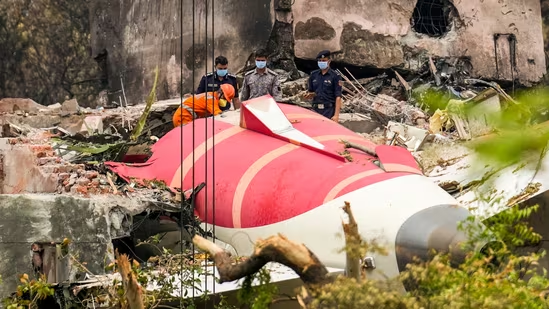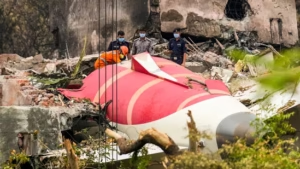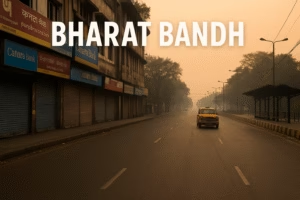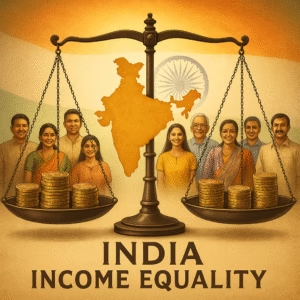
Ahmedabad plane crash (PTI)
Ahmedabad Crash Fallout: Families May Sue Air India and Boeing in US, UK Courts

The aftermath of the Ahmedabad plane crash that shook India on June 12, 2025, is now entering the legal phase. Families of several victims, especially those based in the United Kingdom and the United States, are considering legal action against both Air India and Boeing. Sources close to the matter confirm that legal consultations are already underway with top aviation law firms to file lawsuits in London and American courts.
This shift in legal venue is not accidental. According to international aviation experts, pursuing compensation in foreign courts may offer higher damages, more transparency, and stronger scrutiny into corporate accountability than proceedings limited to Indian jurisdiction. The lawsuits will likely invoke provisions from the Montreal Convention, a multilateral treaty that governs airline liability in case of injury or death of passengers.
Legal Momentum Builds after Ahmedabad Plane Crash
In the devastating Ahmedabad plane crash, Flight AI-171 — a Boeing 787 aircraft operated by Air India — crashed during landing, killing 241 onboard, including 52 British nationals and 181 Indian citizens, and leaving another 19 dead on the ground. A single survivor remains in critical condition.
While the Indian government and Tata Group (Air India’s owner) offered interim compensation of ₹1 crore and ₹25 lakh through Tata AIG, several families, particularly those from the UK, argue that the amount falls short of international standards for wrongful death compensation.
Who’s Leading the Legal Action?
- Keystone Law (UK): Representing British victims’ families. Known for its aviation and personal injury expertise.
- Wisner Law Firm (USA): A reputed firm in aviation litigation, including prior Boeing crash cases, will support victims’ legal claims in the United States.
Legal filings are expected to begin shortly, with consultations already in progress. The families are currently reviewing early settlement offers but may decline them in favor of broader litigation.
Why Sue in the US and UK?
The rationale for pursuing the matter in Western courts includes:
- Potential for significantly higher compensation compared to Indian legal limits
- Access to extensive corporate records through discovery procedures
- Possibility of jury trials, especially in US courts, which often result in large settlements
- Ability to sue manufacturers like Boeing directly in the US
Montreal Convention: The Legal Foundation
Under the Montreal Convention of 1999, which India, the US, and the UK are signatories to, airlines are strictly liable for passenger deaths or injuries. Compensation is uncapped if negligence or failure can be proven. This forms the legal basis for the families’ potential lawsuits and is central to their arguments for better compensation.
Government Response and Domestic Investigations
India’s Directorate General of Civil Aviation (DGCA) has launched a full inquiry into the Ahmedabad plane crash. Meanwhile, a public interest litigation (PIL) has been filed in the Supreme Court seeking grounding of all Boeing 787 aircraft operated by Air India pending detailed technical inspections.
Transport Minister Rajiv Chandrashekar has indicated that Air India may need to implement additional maintenance protocols across its long-haul fleet. Boeing is cooperating with Indian regulators but has not issued any formal statement on legal threats arising from this crash.
What’s Next for the Victims’ Families?
- Legal notices are expected to be served within the coming weeks.
- Civil suits will likely be filed in the High Court of London and in US District Courts.
- Plaintiffs may target both Air India (for operational failures) and Boeing (for possible aircraft malfunctions or negligence).
Potential Outcomes and Precedents
If successful, the lawsuits could compel Air India and Boeing to pay multi-million dollar settlements. The cases may also set legal precedents for transnational aviation claims involving Indian carriers. Additionally, stronger safety standards could be mandated as a result of the global scrutiny that follows such litigation.
Conclusion
The Ahmedabad plane crash continues to reverberate across legal, political, and emotional spectrums. While domestic authorities probe the technical causes, the families’ pursuit of justice in US and UK courts introduces a powerful legal dimension. As they push for transparency and fair compensation, these lawsuits could reshape accountability standards in the Indian aviation sector and beyond.
About The Author
Discover more from Trendy India News
Subscribe to get the latest posts sent to your email.






